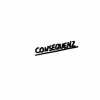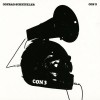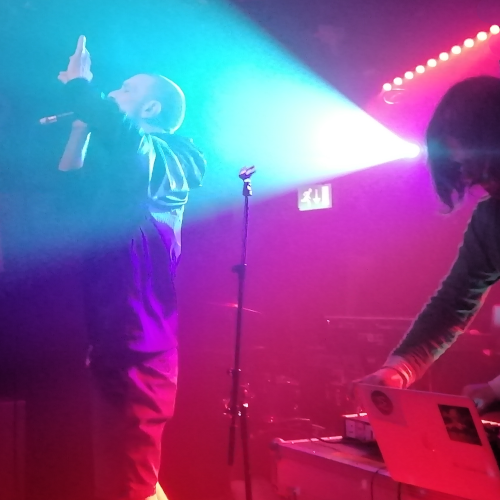 Conrad Schnitzler’s late ’70s and early ’80s period is difficult to pigeonhole within his larger body of work. By this point he had moved on from the early expansive drone pieces that featured on his first three releases and begun to amalgamate rhythmic patterns along side more condensed song structures. His Peter Baumann-produced 1978 album Con touched upon pop signatures but also allowed typical Schnitzler areas of experimentation. This was not altogether successful and these blending of sonic motifs would come together in a substantial ‘art rock’ vein within Consequenz, but would also borrow elements of the earlier ‘Krautrock’ period.
Conrad Schnitzler’s late ’70s and early ’80s period is difficult to pigeonhole within his larger body of work. By this point he had moved on from the early expansive drone pieces that featured on his first three releases and begun to amalgamate rhythmic patterns along side more condensed song structures. His Peter Baumann-produced 1978 album Con touched upon pop signatures but also allowed typical Schnitzler areas of experimentation. This was not altogether successful and these blending of sonic motifs would come together in a substantial ‘art rock’ vein within Consequenz, but would also borrow elements of the earlier ‘Krautrock’ period.
“Lugen Haben Kurze Beine” is all industrial drum machines and staccato synth tune; the robots are coming to town and the age of men has passed. The simple synth phrase follows the track throughout leaving a treadmill element to the music. “Nachte in Kreuzberg” sounds like Weimar cabaret tunes played by electronics and has a touch of the Tomitas about it. “Humpf” is punk-sounding electronic beats punctuated by Morse code pulses from the synth that leave a sense of urgency on the listener. “MS-477” drags us back to galactic motorik as we speed on the first Autobahn to take us to the edge of the universe. Its burbling synths and repetitive bass line gives us glimpses of a unchanging landscape. Dramatic rhythms introduce “Pendel,” its plodding bass line and gurgling VCS 3 giving the illusion of being stuck on a dark conveyer belt to a vast factory where all the workers are machines – this is the most post-punk sounding piece on the album. “Wer Geht Da?” has eerie echoed Ultravox-sounding synths playing over a cavernous guitar line; the dance tune for the end of time held in a continental futurists club. “Copacabana” has a swaying swing Latin beat that underplays a synth riff while synthetic birds tweet from plastic trees. Again repetition is the factor here: this is pop, but one without a chorus or middle eighth, just an endless repeating verse.
There are two bonus tracks on this release, simply known by the titles of “Bonus 1” and “Bonus 2.” Drones and stumbling drum machine introduces “1,” this then is picked up by a funky Fender Rhodes-style piano section. But before long we are scrabbling on the outer edges of the atmosphere. The pieces remind me of some of Brian Eno’s ambient experiments with a band during the mid ’70s, as it falls into some angular Another Green World-style playing. “2” has scatter-gun drum machine and Chris Squire prog rock bass ramblings over a fragmented melody that treads more of the path of jazz. Even though any extra material is always good to hear, “Bonus 2” does make the album now close on rather an awkward note. You can also hear that it is out of step with the linear nature of the original album; however, this is only a small quibble.Over all Consequenz was a bold undertaking and a step into a different direction for Schnitzler. Its use of industrial soundscapes to deliver a cold and bold album places it directly within the era it was recorded. This is not mere pop music, but something with depth where the melodies have to be prised out carefully like jewels. Schnitzler is the Varèse of the five minute song.
 Speaking of pop, Con 3 follows up on Consequenz and is considered to be Schnitzler’s most poppy album amongst his catalogue of releases. Produced by Tangerine Dream’s Peter Bauman, the album feels like a step onwards from where the previous album left off and production levels seem higher this time around, with the tonal bottom end of the music given more depth. But at points the forward momentum gets stifled in its attempt to make clever pop. This was stumbling block that other art rockers such as David Bowie, Talking Heads or Japan were also finding around the same time.
Speaking of pop, Con 3 follows up on Consequenz and is considered to be Schnitzler’s most poppy album amongst his catalogue of releases. Produced by Tangerine Dream’s Peter Bauman, the album feels like a step onwards from where the previous album left off and production levels seem higher this time around, with the tonal bottom end of the music given more depth. But at points the forward momentum gets stifled in its attempt to make clever pop. This was stumbling block that other art rockers such as David Bowie, Talking Heads or Japan were also finding around the same time.
On “Komm Mit Nach Berlin,” a Burundi-style drum beat hammers above fluting synths and half-whispered vocals as if Conrad is taking us on a tour of dark alleyways around the capital city. “Wer Sind Wir Denn” has a vague reggae beat underneath droning keyboards and a chanted vocal that slowly disintegrates into a party-sounding atmosphere. A high pitch synth cuts like glass over the top of this as the piece reaches its conclusion. “Coca” is ethereal chords under café-style xylophone playing as if we were sitting inside a Parisian restaurant late one night. Conrad sings in English over the top and its one of his strongest vocals on the album, though the lyrics themselves are surreal nonsense and are used for effect rather than for any deeper meaning.
Chaotic keyboards and drums introduce “Seemannslied” and its here for the first time I see a connection with the German new wave as the resemblance to some of the songs by Abwarts etc. comes more in to play here at the crossroads where punk becomes industrial. This is quite evident in Conrad’s vocal delivery. Twirling VCS 3 introduces “Das Tier” over a steady drum beat and metal percussion (Neubauten anyone?). But it’s the deep boom of the monosynth that adds the greatest change under Conrad’s monotone vocals. “Tanze Im Regen” is a dreamy piece. It starts with wave sounds and a glorious synth sound that plays a simple melody almost half heard in the background. Again a comparison with Kraftwerk’s “Europe Endless” with its similar sounding keyboard line and repetitive tune are easy to make; however this also points in the direction of the new wave as well and you can hear the bridge that spans two sides of German electronic popular music at this point. It’s definitely an album highlight. The CD of this album comes with six bonus tracks, starting with “Con 3.1”. This opens with squelching atonal synth before a two note drone bass moves in and another keyboard plays laser gunfire sounds – all this happens over a steady motorik beat. Electronic handclaps introduce “Con 3.2” and keep a rhythm over what sounds like the beating of kitchen utensils and a high end keyboard riff. “Con 3.32 has more jazz meets industrial hammering over a Wasp-like synth sound and the odd piano note, which makes an echoed surreal movement that harks more towards Stockhausen than popular music. A drum machine bounces into “Con 3.4” and it’s here Schnitzler gets closest to synth pop with the track’s jaunty bass tune and its Yellow Magic Orchestra-sounding lead. This is one track that would have fitted on to the original album with ease and certainly attempts Conrad’s idea of merging pop with avant-garde better than some of the original tracks. The other two bonuses are alternative mixes of both “Seemannslied” and “Wer Sind Wer Denn.”So the album comes across as a bit of a mixed bag. The tracks that do work are remarkably good, but the ones that don’t sound rather dated and seem to prefer ideas over any strong sense of songwriting. This is OK in principle when sketching out songs (especially within a pop medium), but sound rather awkward when put alongside stronger material. The production and the use of real drums this time around are marvellous and certainly boost certain songs. However, you do feel this is a bridging album to a next idea that Conrad will take forward and there seems to be a lack of confidence and cohesion in some of the songs. But then again this is Schnitzler and all experiments are worth throwing in there, and when they do work they are wonderful.
-Gary Parsons-



